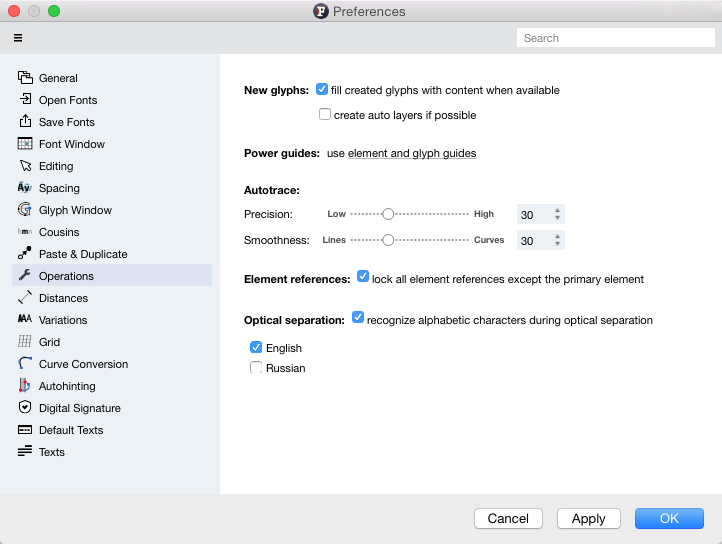
The different masters’ glyphs are available as layers attached to the glyph objects which are attached here. Even when no interpolation is involved, for the sake of object model consistency there will still be one master and one instance representing a single font.Īlso, the glyphs are attached to the Font object right here, not one level down to the masters. This object is host to the masters used for interpolation. If defined as a ligature in the glyph database, this function returns a list of glyph names that this ligature could be composed of. String productionGlyphName ( name ) ¶Ĭonverts glyph name to production glyph name (e.g. ParametersĬonverts glyph name to nice, human-readable glyph name (e.g. Generates GSGlyphInfo object for a given hex unicode. GSGlyphInfo glyphInfoForUnicode ( Unicode ) ¶ Parametersįont – if you add a font, and the font has a local glyph info, it will be used instead of the global info data. Generates GSGlyphInfo object for a given glyph name. String – The search term glyphInfoForName ( String ) ¶ Shows the Glyph Info window with a preset search string Parameters Return typeĭeletes the content of the console in the macro window showGlyphInfoPanelWithSearchString ( String ) ¶ ShowInterface ( bool) – If a document window should be opened. Path ( str) – The path where the document is located. append ( newMenuItem )įunctions open ( Path ) ¶ Typeįollowing constants for accessing the menus are defined:ĪPP_MENU, FILE_MENU, EDIT_MENU, GLYPH_MENU, PATH_MENU, FILTER_MENU, VIEW_MENU, SCRIPT_MENU, WINDOW_MENU, HELP_MENUĭef doStuff ( sender ): # do stuff newMenuItem = NSMenuItem ( 'My menu title', doStuff ) Glyphs. The build number increases with every released build and is the most significant evidence of new Glyphs versions, while the version number is set arbitrarily and stays the same until the next stable release. TypeĮspecially if you’re using preview builds, this number may be more important to you than the version number. Use this to check for version in your code. To check for a specific version, use Glyphs.versionNumber below. String containing Glyph.app’s version number. bezierPathWithOvalInRect_ ( rect ) bezierPath. y - scaleCorrectedHandleSize * 0.5 ), ( scaleCorrectedHandleSize, scaleCorrectedHandleSize )) bezierPath = NSBezierPath. x - scaleCorrectedHandleSize * 0.5, point. scale # Draw point in size of handles point = NSPoint ( 100, 100 ) NSColor. handleSize * 2.5 # (= 5.0 or 7.5 or 10.0) scaleCorrectedHandleSize = handSizeInPoints / Glyphs.

# Calculate handle size handSizeInPoints = 5 + Glyphs. To use the handle size for drawing in reporter plugins, you need to convert the handle size to a point size, and divide by the view’s scale factor. Corresponds to the ‘Handle size’ setting from the Preferences. Size of Bezier handles in Glyph Edit view. Corresponds to the “Width of editor” setting from the Preferences. boolDefaults : print ( '"" is set' ) scriptAbbreviations ¶Ī dictionary with script name to abbreviation mapping, e.g., ‘arabic’: ‘arab’ TypeĪ dictionary with glyphs name suffixes for scripts and their respective script names, e.g., ‘cy’: ‘cyrillic’ TypeĪ dictionary with language tag to script tag mapping, e.g., ‘ENG’: ‘latn’ TypeĪ list of dictionaries with more detailed language informations.


 0 kommentar(er)
0 kommentar(er)
